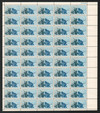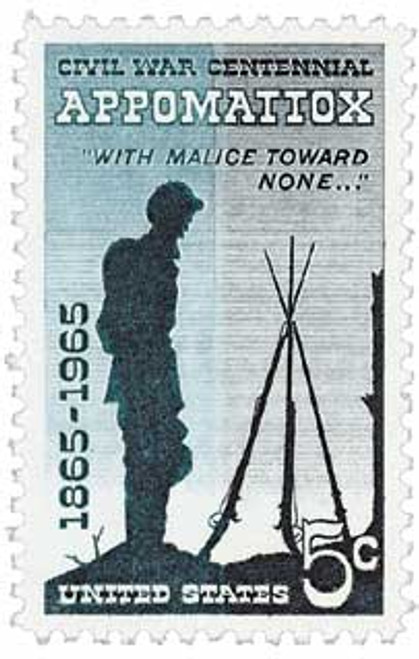
1963 5c Civil War Centennial: Battle of Gettysburg
# 1180 - 1963 5c Civil War Centennial: Battle of Gettysburg
$0.35 - $30.00
U.S. #1180
4¢ Gettysburg
Civil War Centennial Series
4¢ Gettysburg
Civil War Centennial Series
Issue Date: July 1, 1963
City: Gettysburg, PA
Quantity: 79,905,000
Printed by: Bureau of Engraving and Printing
Printing Method: Giori Press
Perforations: 11
Color: Gray and blue
City: Gettysburg, PA
Quantity: 79,905,000
Printed by: Bureau of Engraving and Printing
Printing Method: Giori Press
Perforations: 11
Color: Gray and blue
U.S. #1180 honors the Battle of Gettysburg. The stamp image is the result of the first nationwide contest sponsored by the Post Office Department inviting professional artists to design a U.S. postage stamp. Pictured are a Confederate soldier on a gray background and Union soldier on a blue background.
U.S. #1180
4¢ Gettysburg
Civil War Centennial Series
4¢ Gettysburg
Civil War Centennial Series
Issue Date: July 1, 1963
City: Gettysburg, PA
Quantity: 79,905,000
Printed by: Bureau of Engraving and Printing
Printing Method: Giori Press
Perforations: 11
Color: Gray and blue
City: Gettysburg, PA
Quantity: 79,905,000
Printed by: Bureau of Engraving and Printing
Printing Method: Giori Press
Perforations: 11
Color: Gray and blue
U.S. #1180 honors the Battle of Gettysburg. The stamp image is the result of the first nationwide contest sponsored by the Post Office Department inviting professional artists to design a U.S. postage stamp. Pictured are a Confederate soldier on a gray background and Union soldier on a blue background.










